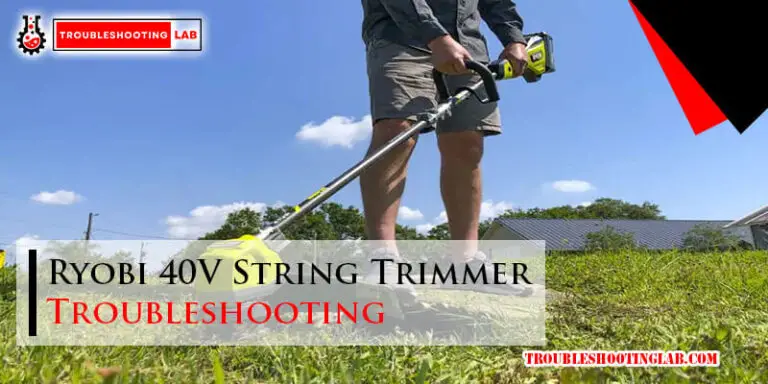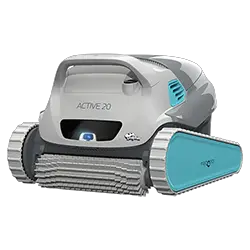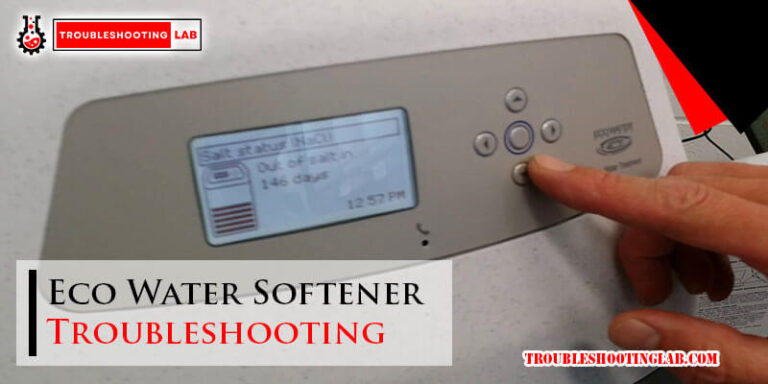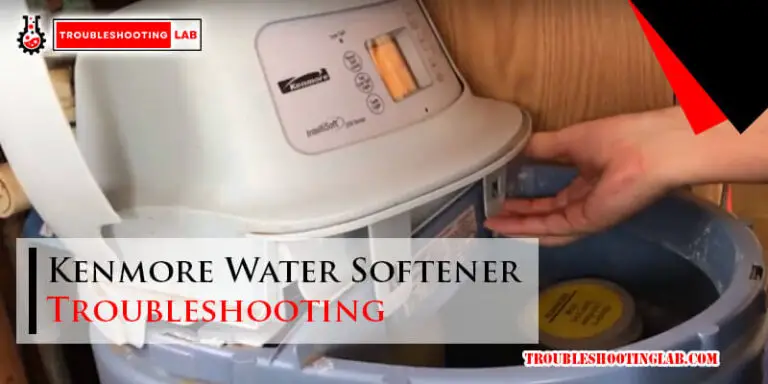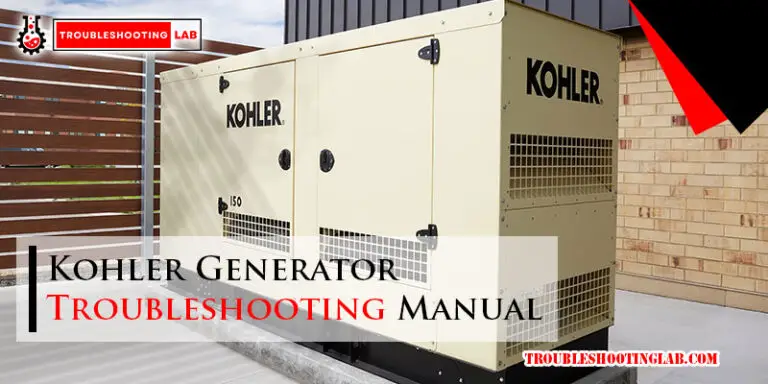Greenworks Pressure Washer Troubleshooting: Common Fixes and Tips
Greenworks pressure washers are popular for their power and efficiency. Yet, like any machine, they can face issues.
Troubleshooting your Greenworks pressure washer can seem daunting. But, knowing common problems and solutions can save time and frustration. Whether it’s a loss of pressure, a leak, or the unit won’t start, there are steps to take. Understanding these issues helps keep your pressure washer in top shape.
This guide will walk you through the most frequent problems. You’ll learn how to identify and fix them. With a bit of patience and knowledge, you can handle most issues on your own. Let’s dive in and get your pressure washer working like new again.
Introduction To Greenworks Pressure Washer
Greenworks pressure washers offer great power and efficiency. These machines are perfect for cleaning patios, driveways, and other outdoor areas. They are user-friendly and reliable. Yet, like all machines, they may need some troubleshooting. This guide will help you understand your Greenworks pressure washer better.
Overview Of Features
Greenworks pressure washers have many features that make cleaning easier. Here are some key features:
- Powerful Motor: Provides strong water pressure for tough cleaning jobs.
- Adjustable Nozzles: Different nozzles for various cleaning tasks.
- Detergent Tank: Holds cleaning solutions for extra cleaning power.
- Long Hose: Allows you to reach distant areas without moving the unit.
- Compact Design: Easy to store and transport.
These features make Greenworks pressure washers a top choice for many users. Understanding these features will help you troubleshoot problems quickly.
Importance Of Regular Maintenance
Regular maintenance is crucial for the performance and longevity of your Greenworks pressure washer. Here are some maintenance tips:
- Inspect Hoses: Check for any cracks or leaks in the hoses.
- Clean Nozzles: Ensure nozzles are free from debris and blockages.
- Check Filters: Clean or replace filters regularly to maintain water flow.
- Store Properly: Keep the pressure washer in a dry and safe place when not in use.
- Lubricate Parts: Lubricate moving parts to prevent rust and wear.
By following these maintenance tips, you can avoid common problems. It ensures your pressure washer works efficiently every time.
| Feature | Benefit |
|---|---|
| Powerful Motor | High water pressure for tough cleaning tasks |
| Adjustable Nozzles | Versatility in cleaning different surfaces |
| Detergent Tank | Extra cleaning power with detergents |
| Long Hose | Reach distant areas easily |
| Compact Design | Easy storage and transport |
Understanding these features and maintenance tips will help you keep your Greenworks pressure washer in top condition. Happy cleaning!
Common Issues
Many users face common issues with their Greenworks pressure washer. These problems can disrupt your cleaning tasks. Here, we will discuss some frequent issues and provide troubleshooting tips.
Pressure Drop
A sudden pressure drop can reduce cleaning efficiency. Here are some causes and solutions:
- Check the water source. Ensure it has adequate flow.
- Inspect the hose for kinks or leaks.
- Clean the nozzle. Debris can block water flow.
- Examine the inlet filter. Clean it if it’s dirty.
- Ensure the unit is on a stable surface.
Regular maintenance can prevent pressure drop issues. Always follow the manufacturer’s guidelines.
Water Leaks
Water leaks can waste water and reduce pressure. Identify and fix leaks quickly. Here are some steps:
- Check all connections. Tighten any loose fittings.
- Inspect the hose. Look for cracks or holes.
- Examine the pump. Ensure it is not damaged.
- Replace worn-out O-rings and seals.
- Test the unit after fixing to ensure no leaks.
Addressing water leaks promptly will extend the life of your pressure washer.
Startup Problems
Experiencing startup problems with your Greenworks pressure washer can be frustrating. Whether your unit won’t turn on or the motor stalls, these issues can hinder your cleaning tasks. This section provides clear troubleshooting steps to help you resolve these common startup problems.
Unit Won’t Turn On
If your Greenworks pressure washer won’t turn on, there are a few things to check. First, ensure the unit is properly plugged into a power source. Sometimes, the outlet might be faulty. To check this, plug another device into the same outlet.
Next, inspect the power cord for any visible damage. A damaged cord can prevent the unit from receiving power. If the cord is intact, check the reset button on the GFCI plug. Press the reset button and try turning the unit on again.
If the unit still doesn’t turn on, the problem might be with the power switch. Ensure the switch is in the “on” position. If everything seems fine, but the unit still won’t start, you might need to replace the power switch.
Motor Stalls
A stalling motor can be a sign of various issues. First, check if the water supply is adequate. Ensure the hose is not kinked or blocked. The pressure washer needs a constant water flow to operate properly.
Another common cause of motor stalling is air trapped in the pump. To fix this, disconnect the hose from the machine. Let water run through the hose until it flows steadily. Then, reconnect the hose and try starting the unit again.
If the motor continues to stall, check the nozzle. A clogged nozzle can impede water flow and cause the motor to stall. Clean the nozzle with a small brush or replace it if necessary.
For persistent stalling issues, inspect the pressure washer for internal blockages. This can include checking the water inlet filter and cleaning it if dirty. Regular maintenance can prevent these problems and ensure smooth operation.
| Problem | Possible Causes | Solutions |
|---|---|---|
| Unit Won’t Turn On | Power source, damaged cord, faulty switch | Check power source, inspect cord, replace switch |
| Motor Stalls | Inadequate water supply, air in pump, clogged nozzle | Ensure water flow, bleed air, clean/replace nozzle |

Credit: www.greenworkstools.com
Pressure Inconsistencies
Pressure inconsistencies in Greenworks pressure washers can be frustrating. Understanding the causes helps in fixing the issues. Below are common problems and solutions.
Fluctuating Pressure
Fluctuating pressure can occur due to several reasons. These include air in the pump, clogged nozzles, or a dirty water filter.
- Air in the pump: Run the washer with the trigger pulled until the air is expelled.
- Clogged nozzles: Clean or replace the nozzles to ensure proper flow.
- Dirty water filter: Remove and clean the water filter to restore normal pressure.
Low Pressure Output
Low pressure output often results from insufficient water supply, a worn pump, or a damaged hose.
- Insufficient water supply: Ensure the water source provides adequate flow.
- Worn pump: Check for wear and tear, and replace if necessary.
- Damaged hose: Inspect the hose for leaks or kinks, and repair or replace as needed.
| Issue | Possible Cause | Solution |
|---|---|---|
| Fluctuating Pressure | Air in pump, clogged nozzles, dirty water filter | Expel air, clean nozzles, clean water filter |
| Low Pressure Output | Insufficient water supply, worn pump, damaged hose | Check water supply, replace pump, repair/replace hose |
Nozzle And Spray Issues
Greenworks pressure washers are reliable tools for keeping surfaces clean. Yet, users sometimes face issues with the nozzle and spray. Understanding these problems helps in maintaining the machine’s performance.
Clogged Nozzles
A clogged nozzle is a common issue. Dirt and debris can block the nozzle, affecting water flow. To fix this, follow these simple steps:
- Turn off the pressure washer.
- Disconnect the nozzle from the spray wand.
- Use a nozzle cleaning tool or a pin to remove debris.
- Flush the nozzle with water to ensure it is clear.
- Reconnect the nozzle and test the pressure washer.
Regular cleaning of the nozzle prevents clogs. Always check the water source for dirt and impurities.
Uneven Spray Patterns
Uneven spray patterns can reduce cleaning efficiency. This issue usually arises from nozzle wear or partial blockages. Here’s how to address it:
| Step | Description |
|---|---|
| 1 | Inspect the nozzle for wear or damage. |
| 2 | Check for partial blockages and clean if necessary. |
| 3 | Replace the nozzle if it is worn out or damaged. |
| 4 | Ensure the spray wand is not cracked. |
Correcting spray pattern issues ensures your Greenworks pressure washer operates efficiently. Always use compatible nozzles for your machine.

Credit: www.youtube.com
Hose And Connection Troubles
Experiencing issues with your Greenworks pressure washer’s hose and connections? You’re not alone. These problems can be frustrating but are usually easy to fix. In this section, we will discuss common issues like leaking connections and damaged hoses. Let’s dive in to ensure your pressure washer works efficiently.
Leaking Connections
Leaking connections can reduce the pressure washer’s performance. Check the following steps to fix leaks:
- Inspect the O-rings: O-rings are often the cause of leaks. Make sure they are not worn out or damaged. Replace if necessary.
- Tighten the connections: Loose connections can cause leaks. Ensure all connections are tightly secured.
- Use plumber’s tape: Wrap plumber’s tape around the threads of the connections to create a better seal.
Still experiencing leaks? It might be time to replace the connectors. Check the manual for compatible parts.
Damaged Hoses
A damaged hose can stop your pressure washer from working properly. Look for these signs of damage:
- Cracks and cuts: Inspect the hose for visible cracks or cuts. Small damages can be repaired with a hose repair kit. Larger damages may require a hose replacement.
- Bulges: Bulges in the hose indicate internal damage. Replace the hose to avoid bursts.
- Leaks: Check for leaks along the hose. Leaking hoses reduce water pressure and should be fixed immediately.
Use these tips to maintain your hose:
- Store the hose properly to prevent kinks and damage.
- Keep the hose away from sharp objects.
- Inspect the hose regularly for signs of wear and tear.
By taking care of your pressure washer’s hose and connections, you can ensure it runs smoothly for years.
Electrical Malfunctions
Electrical malfunctions can disrupt the operation of your Greenworks pressure washer. These issues often stem from common electrical problems. Understanding these problems can help you troubleshoot and fix your pressure washer. Below are some key areas to check.
Tripped Circuit Breaker
A tripped circuit breaker is a common issue. Ensure the circuit breaker has not tripped. Follow these steps to check:
- Locate your home’s main electrical panel.
- Find the breaker labeled for the outdoor outlet.
- Check if the breaker is in the “off” position.
- If so, switch it back to the “on” position.
If the breaker keeps tripping, there may be an overload or a short circuit. Consult an electrician to inspect the wiring.
Faulty Power Cord
A faulty power cord can prevent your pressure washer from working. Inspect the cord for damage. Follow these steps:
- Unplug the power cord from the outlet.
- Check for cuts, frays, or exposed wires.
- Look for bent or damaged prongs on the plug.
If you find any damage, replace the power cord. A damaged power cord can be a safety hazard. Always use a cord rated for outdoor use.
Ensuring your power cord and circuit breaker are in good condition can prevent many electrical malfunctions. Regular maintenance can keep your Greenworks pressure washer running smoothly.
Maintenance And Care Tips
Proper maintenance and care extend the life of your Greenworks pressure washer. Routine cleaning and inspections prevent issues and keep it running smoothly. Follow these tips to ensure your pressure washer remains in top condition.
Cleaning And Storage
After each use, clean your pressure washer to prevent buildup. Flush out any remaining detergent by running clean water through the machine.
- Remove and clean the nozzle to avoid clogs.
- Wipe down the exterior with a damp cloth.
- Ensure all connections are dry before storing.
Store your pressure washer in a cool, dry place. Avoid leaving it outside exposed to elements.
Regular Inspection Routines
Inspect your pressure washer regularly. This helps identify potential issues early. Check for wear and tear on hoses and connections.
- Look for any leaks or cracks.
- Ensure the power cord is in good condition.
- Check the oil level and change if necessary.
Perform these inspections monthly to keep your pressure washer in optimal condition.
When To Seek Professional Help
Your Greenworks Pressure Washer might give you trouble sometimes. While minor issues can often be fixed at home, there are times when seeking professional help is essential. Knowing when to call a technician can save you time and prevent further damage to your equipment. Here are some signs that it’s time to bring in a pro.
Identifying Complex Issues
Sometimes, the problems with your pressure washer aren’t simple. If you notice persistent issues like unusual noises, water leaks, or inconsistent pressure, you may be facing more complex problems. These could include:
- Internal component damage
- Electrical malfunctions
- Severe clogs or blockages
Attempting to fix these issues yourself can sometimes make things worse. In such cases, it’s best to contact a professional technician who has the right tools and expertise to diagnose and fix the problem.
Finding A Trusted Technician
Finding a reliable technician is crucial. Here’s how you can identify a trusted professional:
- Check online reviews and ratings
- Ask for recommendations from friends or family
- Ensure they have certifications and experience
You can also visit the Greenworks official website to find authorized service centers. They often have a list of certified technicians who are trained to handle specific issues with your pressure washer.
If you have a warranty, contact Greenworks customer service. They can guide you on the next steps and recommend a trusted repair service.
| Issue | When to Seek Help |
|---|---|
| Electrical Problems | If you notice sparks or smell burning |
| Water Leaks | Persistent leaks that you can’t fix |
| Inconsistent Pressure | Pressure fluctuates despite cleaning filters |
Remember, it’s better to be safe than sorry. If you’re unsure about any issue, seeking professional help is always a good idea. This ensures your pressure washer stays in good working condition for a long time.
Credit: www.tiktok.com
Frequently Asked Questions
Why Is My Greenworks Pressure Washer Not Starting?
Your Greenworks pressure washer may not start due to a power supply issue or a tripped circuit breaker.
How Do I Reset My Greenworks Pressure Washer?
To reset, unplug the machine, wait for a few minutes, and then plug it back in.
Why Is There Low Pressure From My Greenworks Washer?
Low pressure can be caused by a clogged nozzle, kinked hose, or low water supply.
How Do I Fix Leaks In My Greenworks Pressure Washer?
Check for loose connections and tighten them. Replace any damaged hoses or seals.
What Should I Do If My Greenworks Pressure Washer Overheats?
Turn off the machine, let it cool down, and ensure proper ventilation before restarting.
Conclusion
Troubleshooting your Greenworks pressure washer can be straightforward. Always check the basics first. Ensure connections are tight. Clean or replace clogged parts. Follow the manual for specific issues. Regular maintenance prevents many problems. If issues persist, contact customer support. They can provide expert help.
Keep your pressure washer in good condition for best performance. Happy cleaning!

